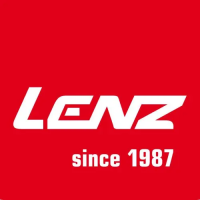Information SET-02 19
DIGITAL plus
0
M
switches function 0 on or off
(normally the direction-dependent
front lighting).
1
5
switches function 1 on or
off
2
6
switches function 2 on or off
3
7
switches function 3 on or
off
4
8
switches function 4 on or off
For functions 5 through 8 you need 2 keystrokes.
+
1
5
switches function
5 on or off
+
2
6
switches function
6 on or off
+
3
7
switches function
7 on or off
+
4
8
switches function
8 on or off
Of course these functions can only be used, if the decoder installed
in the locomotive has the corresponding function outputs and if
these outputs are connected to a locomotive function (lighting,
smoke generator, coupling and so on).
9 Matching the LH200's Throttle Notches to the
Decoder's Speed Steps
In this section you will learn:
- what throttle notches and speed steps are
- which throttle notch modes you can select
- how you can use the LH200 to match the number of throttle
notches to a specific locomotive address
The range from a stop to the maximum speed of a locomotive is
divided into throttle notches. In the prototype locomotive there is
only a need for a very limited number of throttle notches. For our
models we often want much smoother operation than offered in the
prototype. The more precisely the speed can be controlled, (that is
the more steps up or down in speed that the whole range can be
divided into) the greater the number of throttle notches that are
needed. The LH200 rotary control knob has 256 different throttle
positions to provide the maximum smoothness in operation.
DCC decoders support a variety of speed step modes. The most
common are 14, 28, and 128. Speed step modes reflect the
number of throttle notches that the decoder will support. SET-02
supports all three of these speed step modes. Since different
commands are sent to the decoder in all three modes it is
necessary to match the number of LH200 throttle notches to the

